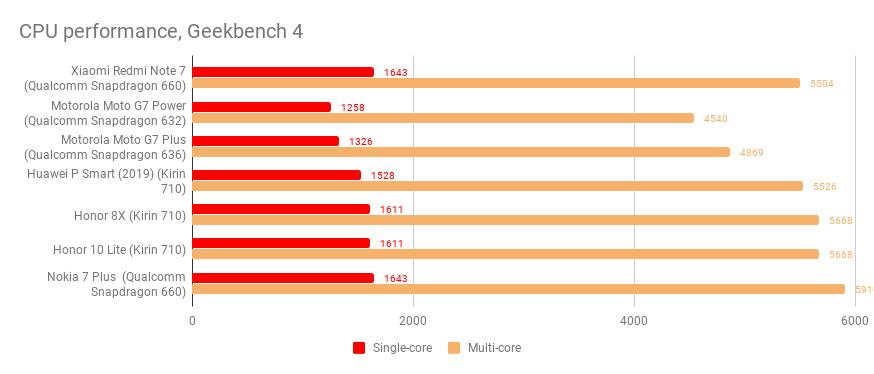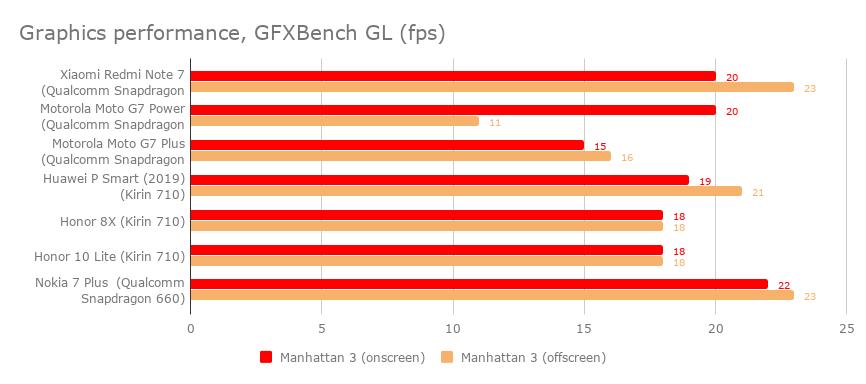For two years, Xiaomi must have been slightly nervous about this day coming. Having decided to call its range of cheap and cheerful Redmi phones the “Note” series, the company was already on the Redmi Note 4 when Samsung’s Galaxy Note 7 started having explosive battery issues. A worldwide recall followed, of course, and the words “Note 7” became bywords for PR disaster and danger. And yet here we are with the Xiaomi Redmi Note 7, which is, thankfully, neither of those things.
Xiaomi Redmi Note 7 review: What you need to know
Xiaomi is well known for its inexpensive handsets, which is best demonstrated by the Pocophone F1 : a Snapdragon 845-toting flagship beater that goes for just £330. If you can get that kind of value for under £350, what do you get in the budget Redmi Note 7? A 2.2GHz octa-core Qualcomm Snapdragon 660 processor powers the phone (the same processor last seen working its magic in the BlackBerry Key2 and Nokia 7 Plus) backed by 4GB RAM, which are certainly solid enough specifications. The coup de grâce, however, is the dual-camera array on the back, which features a 48-megapixel sensor. A camera’s worth is measured in more than just megapixels, but it’s something that’s pretty much unheard of in a phone this price.
Xiaomi Redmi Note 7 review: Price and competition Image 2 of 7
And that price is a mere £179. Gosh, that’s competitive. In this price bracket, the Xiaomi Redmi Note 7 is up against our budget champion: the Moto G7 Power , which is also £179. If you fancy a boost on that, the Moto G7 Plus is better still, but also £90 dearer. Bluntly, it’s probably not 50% better. Then there are two alternatives from Huawei’s sub-brand, Honor, in the form of both the 8X and the 10 Lite . Both of those have come down in price and now hover around the £200 mark. That’s pretty much all you need to know. There’s the 2019 Huawei P Smart at £195, but that’s let down by a weak camera, making it a poor alternative to the G7 Power, let alone the 48-megapixel promise of the Note 7.
Xiaomi Redmi Note 7 review: Design Image 3 of 7
The first thing to say is that the Redmi Note 7 certainly doesn’t feel cheap, but then neither does the Moto G7 Power. In other words, phones are getting better at blending in, and the difference between flagships and budget models is getting thinner and thinner.
It means that you have a screen that dominates the front of the device, punctuated by a teardrop notchlette that houses the front-facing camera. The bezel is pretty thin all the way around, barring a slightly thicker chin – but even this isn’t much more than a couple of millimetres. Flip it over and it’s suitably classy. Like Huawei with last year’s P20 range, the phone has an attractive two-tone design: in the case of our review handset, a design that goes from a rich purple at the top to a light blue at the bottom. A circular fingerprint sensor sits near the top, just diagonally down from the dual-camera array. Of course, it doesn’t have everything for the price. While Xiaomi claims that the Redmi Note 7 will withstand a light splashing, it hasn’t got a full waterproofing IP rating and there’s no room for wireless charging. That said, it does have a couple of plus points: not only does it maintain the 3.5mm headphone jack, it also has a versatile SIM slot that will support either a nano SIM and a microSD card, or two nano SIMs if you want to maintain two phone numbers.
Xiaomi Redmi Note 7 review: Screen Image 5 of 7
Another thing you don’t get for this price is OLED screen technology. Thankfully, the IPS panel Xiaomi has put in is more than good enough for how little you’ll pay and covers most people’s needs. It’s a 6.3in display with a 19.5:9 aspect ratio – it’s tall and thin, in other words, meaning it fits comfortably enough in the hand. That screen is set to a 1,080 x 2,340 resolution, which translates to around 409 pixels per inch. That’s enough for a screen of this size, even if it’s short of the 2K resolution standard you get on pricier handsets. And it’s a very good screen. If you set the screen mode to “Standard” rather than messing around with the slightly garish “Vibrant” setting, you’ll find it’s a decent performer with an sRGB gamut coverage of 93%, with a volume of 97%. It’s also sharp with a contrast of 1,278:1 and, given it can hit a peak brightness of 467cd/m ² , you shouldn’t struggle to read it in the bright sunshine.
Xiaomi Redmi Note 7 review: Performance Image 4 of 7
A quick recap of the specs of the Note 7 before we dig into how it actually performs. You’re looking at an octa-core Qualcomm Snapdragon 660 processor clocked at 2.2GHz, backed by 4GB of RAM and 64GB of internal space. That makes it pretty close to last year’s Nokia 7 Plus and the BlackBerry Key2 (albeit with 2GB less RAM than the Key2 – a blow considerably softened by the fact it’s £400 cheaper).

And, as you can see in the graph above, the Redmi Note 7 performs just as you’d expect. It’s a pretty close match between it, the Huawei P Smart, the two Honor phones and the Nokia 7 Plus. Intriguingly, it also outperforms not just our budget pick – the Moto G7 Power – but also its £269 sibling, the Moto G7 Plus.

This solid performance continues into the graphical tests. While none of the phones in the list are flagship contenders, they all do a fairly similar job of pushing pixels in the moderately challenging Manhattan 3 test from GFXBench. The Redmi Note 7 reaches the same 20fps average as the Moto G7 Power when it comes to onscreen performance, but pulls ahead in the offscreen test thanks to the latter’s 720p display boosting the score. And, yes, it performs well and feels pretty snappy. Of course, a phone is about more than just performance, and while the Moto G7 Power is a bit slower, it does have a very clean installation of Android with no extra fluff to distract. The Redmi Note 7’s MIUI 10.2 software overlay, by contrast, will not be everybody’s cup of tea and takes some getting used to. This can be fixed with third-party launchers, of course, but for a simple take on Android, the Moto is hard to beat.

It’s also hard to beat on battery life. The “Power” in the G7’s name refers to its stamina, rather than performance and the 26hrs 22mins of stamina that the Moto G7 Power provided for our tests simply dwarves the comparatively middling 14hrs 15 mins that the Redmi Note 7 managed, despite its 4,000mAh cell.
Xiaomi Redmi Note 7 review: Camera Image 6 of 7
So far, so good: the Redmi Note 7 goes toe to toe with the Moto G7 Power, beating it on screen resolution and power, but is slightly let down by its middling battery and Xiaomi-flavoured version of Android. Does the camera settle things? On paper, 100%. The Xiaomi Redmi Note 7 packs a camera with specs that are ludicrous for the price point. It incorporates a dual-camera array, with the main 48-megapixel, f/1.8 aperture snapper and large 1.6μm pixels supported by a 5-megapixel lens for adding depth to shots. And the picture quality is fantastic.
But are the images better than those from the Moto G7 Power? Well, it’s probably a draw on balance. That’s not necessarily a bad thing, given the Moto punches well above its weight, but with these specs you’d perhaps expect a little better. Here’s the outdoor shot above zoomed in. As you can see, not only does the Redmi Note 7’s shot look a little washed out, but almost all the detail of the tiles on the rooftop is lost. It’s not like the Moto G7 Power has lots of texture, but there’s enough to see it’s not completely smooth.
But things reverse when it comes to tricky indoor shots, where the Moto G7 Power produces edges that are noticeably blurred, packing in a fair bit of distracting noise.
In short, it’s a draw, but that’s no bad thing considering the quality of the opposition. For £170, both provide better shots than should be possible, so you can’t really complain. The selfie camera is similarly impressive. You’ll find a 13-megapixel shooter that’s more than good enough for video chats and Instagram vanity. Pleasingly, the beauty mode doesn’t go as overboard as other cameras, producing images that could (almost) pass as undoctored.
As for video, it’s very much a mixed bag. On the plus side, quality is good enough and it can record at a maximum frame rate of 60fps in 1080p, but on the downside, the footage is remarkably shaky, even with electronic video stabilisation engaged. It was so shaky that I had to do a second test to make sure it was actually enabled. It was and, as a result, it’s barely worth flagging as a feature.
Xiaomi Redmi Note 7 review: Verdict Image 7 of 7
It’s always a good sign when you come to the end of a review and you’re completely unable to flag any big negatives. There are certainly better phones than the Xiaomi Redmi Note 7, that’s for sure, but you won’t find anything as fleshed out as this when you max out your budget at £179. It’s nippy with a good screen, stylish design and a very good camera. The Xiaomi flavour of Android isn’t to everybody’s taste, but if you can get past that then you’ll be very happy with the Note 7 – it does a wonderful job of showing up its more expensive rivals.
